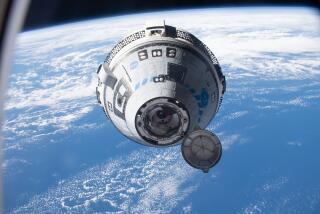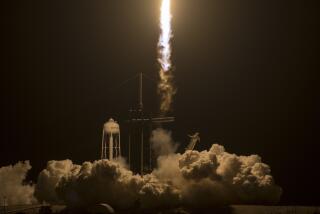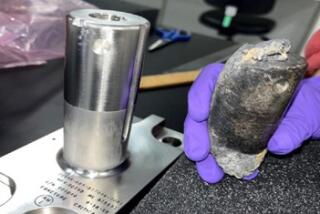Soviet Spacecraft to Fall From Orbit, May Scatter Debris
- Share via
WASHINGTON — A large Soviet spacecraft that appears to have defied U.S. identification efforts has begun moving erratically in orbit and should re-enter the Earth’s atmosphere today, officials said Friday.
Re-entry of the spacecraft, designated Cosmos 1,767, is likely to produce a spectacular light show as its pieces burn up from the friction of re-entering the atmosphere, the officials said.
Officials expressed no concern that the debris will pose a threat to safety.
Del Kindschi, a spokesman for the U.S. Space Command at Colorado Springs, Colo., said: “I guess it is a large satellite, and there is the possibility that some pieces could reach Earth. That’s the reason we’re tracking it down.”
Kindschi said the spacecraft was launched July 30 and that on Aug. 4 a rocket body associated with the spacecraft “decayed in orbit” and re-entered the atmosphere.
Subsequently, the space command classified as debris four other small objects circling the Earth in the same orbit.
Pentagon officials who requested anonymity said Cosmos 1,767 was launched by a new medium-class booster thought to be capable of handling payloads up to 15 tons.
The spacecraft never achieved “anything that we would consider a useful orbit,” said one official. “And to tell you the truth, we’re still not sure what it is.”
More to Read
Sign up for Essential California
The most important California stories and recommendations in your inbox every morning.
You may occasionally receive promotional content from the Los Angeles Times.










